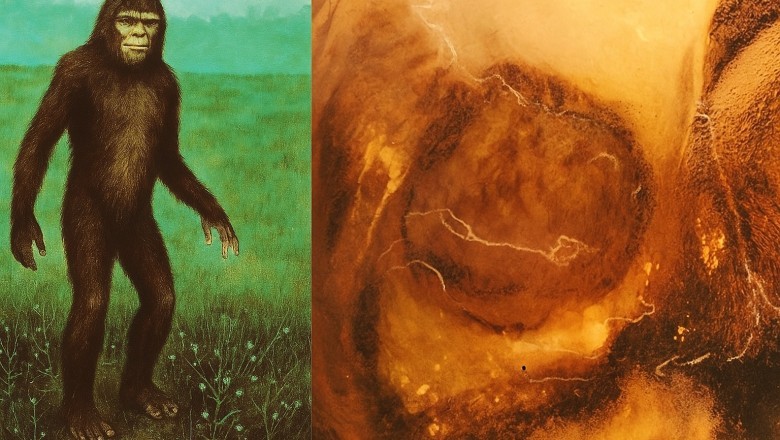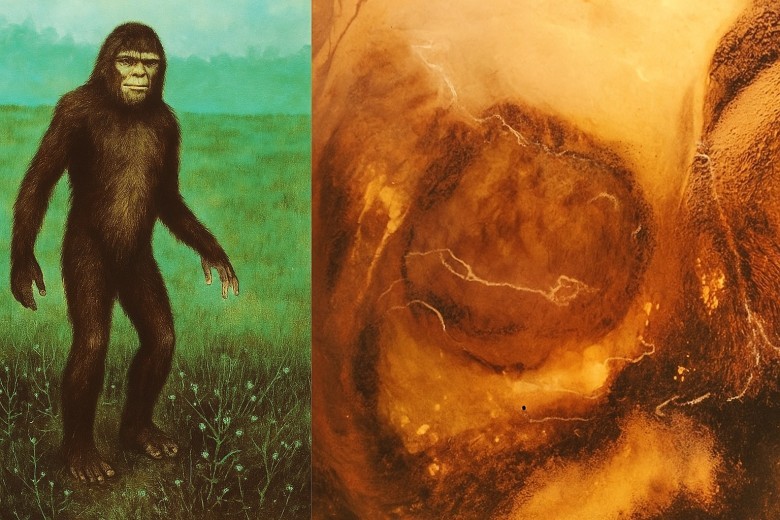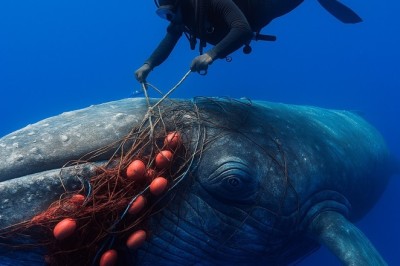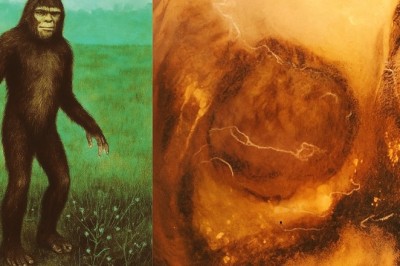
views
🧊 Frozen in Mystery: The Tale of the Minnesota Iceman

In the annals of cryptozoology and fringe science, few stories have captivated the public imagination quite like that of the Minnesota Iceman. A supposed Neanderthal-like creature encased in ice, paraded across the United States in the 1960s, and investigated by scientists, skeptics, and conspiracy theorists alike—this bizarre saga blends spectacle, science, and speculation into one of the strangest chapters in modern folklore.
This article unpacks the full story of the Iceman, from its sensational debut to the tangled web of theories surrounding its origin, identity, and ultimate fate.
🎪 The Iceman Appears
The story begins with Frank Hansen, a former military pilot turned carnival exhibitor, who introduced the world to the Minnesota Iceman in the mid-1960s. Encased in a block of ice and displayed in a refrigerated coffin, the creature was billed as a genuine prehistoric man—possibly a Neanderthal—preserved in perfect condition. Hansen toured shopping malls, state fairs, and roadside attractions, charging admission to curious onlookers eager to glimpse the frozen figure.
The Iceman was described as a hairy, humanoid creature with a broken arm, a smashed eye socket, and a twisted expression frozen in death. Its body was said to be around six feet long, with apelike features and a distinctly human shape. The gruesome injuries suggested a violent end, adding to the mystery and allure.
🔍 Scientific Intrigue
The Iceman might have remained a sideshow oddity if not for the involvement of two prominent scientists: Ivan T. Sanderson, a zoologist and science writer, and Bernard Heuvelmans, a Belgian cryptozoologist. In 1968, the pair examined the Iceman in Hansen’s home and became convinced it was a genuine biological specimen—possibly a new species or even a surviving Neanderthal.
Heuvelmans went so far as to publish a paper in a scientific journal, proposing the creature be named Homo pongoides, a hypothetical human-ape hybrid. Sanderson and Heuvelmans claimed the body showed signs of decomposition beneath the ice, and that its injuries were consistent with a gunshot wound to the head.
Their endorsement gave the Iceman a veneer of legitimacy, sparking interest from the Smithsonian Institution and other scientific bodies. But when officials requested to examine the specimen, Hansen claimed it had been removed by its mysterious owner—an unnamed wealthy individual—and replaced with a wax replica.
🕵️♂️ The Conspiracy Deepens
This sudden switch fueled speculation. Was the original Iceman real? Had it been confiscated by the government? Was Hansen covering up a hoax? Heuvelmans believed the creature had been shot in Vietnam and smuggled into the U.S., possibly by American troops. He speculated that the government had intervened to suppress the discovery, fearing the implications of a living Neanderthal.
Others suggested the Iceman was a clever fabrication—a wax figure designed to mimic a decomposing body. Hansen himself gave conflicting accounts over the years, sometimes claiming it was real, other times admitting it was fake. He even hinted that the original body had been created by Hollywood special effects artists.
The ambiguity only added to the legend. The Iceman became a symbol of the blurry line between science and spectacle, truth and myth.
🧬 The Evolutionary Angle
One of the most fascinating aspects of the Iceman story is its connection to speculative evolution. If the creature were real, it would challenge our understanding of human ancestry and extinction. Neanderthals are believed to have died out around 40,000 years ago, replaced or absorbed by modern humans. A surviving specimen would suggest a hidden lineage, possibly living in remote regions of Southeast Asia.
Heuvelmans theorized that the Iceman represented a relic population of archaic humans, perhaps adapted to jungle environments. Its injuries, he argued, were consistent with a violent encounter—possibly with humans who saw it as a threat or a curiosity.
This idea dovetailed with broader themes in cryptozoology: the belief that unknown species still roam the Earth, hidden from science and civilization. The Iceman became part of a larger narrative that includes Bigfoot, the Yeti, and other legendary creatures.
🧊 The Iceman Revealed
In the 2010s, the Iceman resurfaced—this time in a more mundane setting. The wax figure, long thought lost, was discovered in a private collection and eventually acquired by the Museum of the Weird in Austin, Texas. The museum confirmed it was a latex model, likely created for Hansen’s exhibit after the original was removed.
This revelation seemed to confirm the skeptics’ suspicions: the Iceman was a hoax, a carnival attraction designed to thrill and deceive. But even this resolution left questions unanswered. Was there ever a real body? Did Hansen swap the original for a replica? Was the government involved?
The lack of definitive evidence means the mystery endures. The Iceman remains a case study in ambiguity—a story where truth and fiction are frozen together.
🧠 Cultural Impact
The Minnesota Iceman left a lasting mark on popular culture. It inspired documentaries, books, and countless online debates. It also influenced the way we think about cryptids and fringe science. The idea that a prehistoric human could be discovered in modern times continues to fascinate, even as mainstream science dismisses such claims.
The Iceman also reflects deeper themes: our fascination with the unknown, our desire to believe in hidden truths, and our willingness to suspend disbelief in the face of spectacle. It’s a story that blends horror, hope, and curiosity—a frozen metaphor for the mysteries we chase.
🧾 Conclusion: A Legend Preserved
Whether real or fake, the Minnesota Iceman is more than just a sideshow relic. It’s a symbol of the human imagination, the power of storytelling, and the thin ice between fact and fiction. Its tale reminds us that science is not just about answers—it’s also about questions. And sometimes, the most enduring mysteries are the ones we can’t quite thaw.












Comments
0 comment